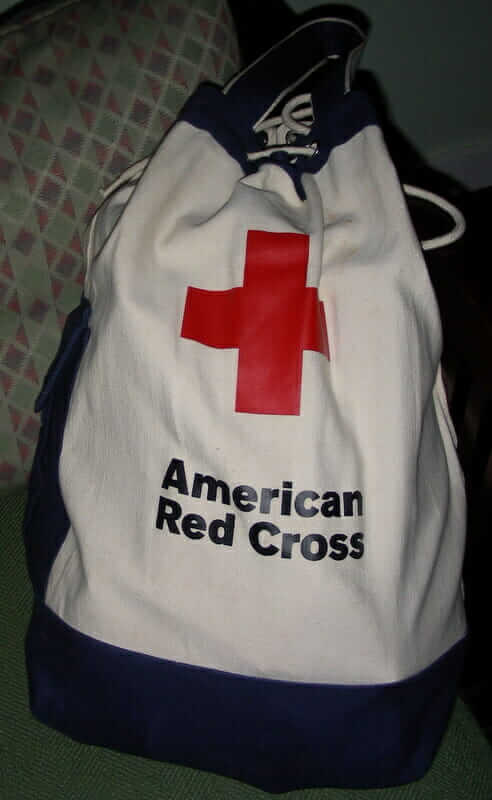
While September is National Preparedness Month, emergencies can happen year-round. They often happen with little warning. You may only have minutes to evacuate.
To improve your chances for survival, it is best to develop a plan and prepare a kit or “grab-and-go” bag. Some great sources to use when making preparations are https://www.ready.gov/september and Judith Kolberg’s Organize for Disaster: Prepare Your Family and Home for any Natural or Unnatural Disaster.
Have a Plan
Put together a plan that involves the whole family. Because disasters can occur when the family is separated, have a communication plan and an emergency meet up place if you can’t gather at home. If everyone is at home, everyone should have a job or responsibility. One person might have the job of corralling pets and putting them in carriers. Another might have the job of pulling out the sleeping bags. Someone else might load the car. Because it is hard to think well when stress is high, practice the plan just as you would a fire drill.
Keep your car on the ready. Always have it well maintained and with at least a half tank of gas. Make sure the spare tire is usable and the jumper cables are easy to access.
When possible, have clear bins already prepared so that they just need to be put in the car. Also have a prepared “grab-and-go” bag stashed in a closet.
Items to Include in Your “Grab-and-Go” Bag
Some items for your “grab-and-go” bag will have to do with safety and communication. Have a radio, flashlight with extra batteries, and a first aid kit with your medications and prescriptions. Always keep your purse in a consistent place with your cell phone, charge cards, and driver’s license. It is a good idea to have an extra phone charger that lives in the “grab-and-go” bag. You don’t always have time to search for the family one. Have some emergency apps preloaded on your phone.
Some items in your kit allow you to survive outside for a while. Have food, water, can opener, matches, blankets, plastic bags, a plastic drop sheet, small travel toilet bag, tissues, and a pen knife in your kit. Have at least one change of clothes, extra glasses, extra keys, and a pen and paper.
Essential Documents and More
Also prepare a folder with all your essential documents, information, and cash. Have as much stored in the cloud as possible but there may be times when that is not accessible, so some hard copies are also a good idea. Have names, phone numbers, email addresses, account numbers as well as contact numbers for insurance, banks, etc. Have some cash. ATMs may not be working.
If you have pets, also include vet/shot information as well as extra collars and leashes, food, a dish, blanket, and a toy.
Take Your Time
It takes considerable time to assemble this “grab-and-go” bag. Break it down into smaller segments and complete a section each week until you are finished. Then update it each year.
It will give you comfort to know that this bag is ready for you should you ever need it. If you have questions about this process reach out to me here or go to our FaceBook page: Ask the Organizers: Diane and Jonda.
Jonda S. Beattie, Professional Organizer and owner of Time Space Organization and co-owner of Release●Repurpose●Reorganize, is based in the Metro-Atlanta area. As presenter, author of three books as well as a retired special education teacher she uses her listening skills, problem solving skills, knowledge of different learning techniques, ADHD specialty, and paper management skills to help clients tackle the toughest organizational issues. Jonda does hands on organizing, virtual organizing, and moderates a Zone Plan Teleclass for those who prefer to work on their own with organizational coaching.